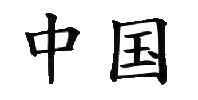China Beat Archive

China Beat Blog: Archive 2008-2012
Date of this Version
11-6-2009
Document Type
Article
Citation
November 6, 2009 in The China Beat http://www.thechinabeat.org/
Abstract
Earlier this week, The China Beat featured an excerpt from the introduction of Julia Lovell’s forthcoming translation, The Real Story of Ah-Q and Other Tales of China: The Complete Fiction of Lu Xun. Urbanatomy has also recently run a piece on Lu Xun and his legacy in Chinese literature, and a story at China Daily discusses Lu Xun’s writings and Lovell’s translation.
I was especially interested, however, in this essay at Urbanatomy by Anna Greenspan (who has also written for The China Beat), as she provides a tour guide to Lu Xun-related sites in Shanghai. While I haven’t visited any of the locations Greenspan flags, several years ago I did spend several days in Lu Xun’s hometown of Shaoxing, Zhejiang Province, where I found a small Lu Xun industry going strong. The city is peppered with statues of the writer and his characters, and 80 RMB bought me a ticket to the “Lu Xun Native Place,” which is a collection of five sites related to his family and childhood. Admission to a large new museum is also included in that entrance fee — though I’m ashamed to admit that a glance at my journal from that trip indicates I quickly got tired of the museum’s crowds and Chinese-only placards, and left before seeing all the exhibits.
In a section of her introduction not included in our excerpt, Lovell mentions the most overtly commercial project to draw on the Lu Xun legacy,
a tacky theme park offering tourists the ‘Lu Xun experience’ — the chance to meet actors hamming it up as the author’s most famous characters (Ah-Q, Kong Yiji and so on), to gamble in traditional wine shops, and generally to savour the darkness of pre-Communist ‘Old Society’ (xxxiii).
Included in
Asian History Commons, Asian Studies Commons, Chinese Studies Commons, International Relations Commons


Comments
Copyright November 6, 2009. Used by permission.